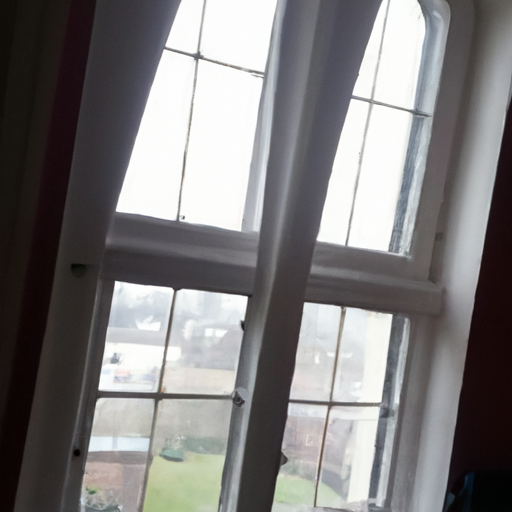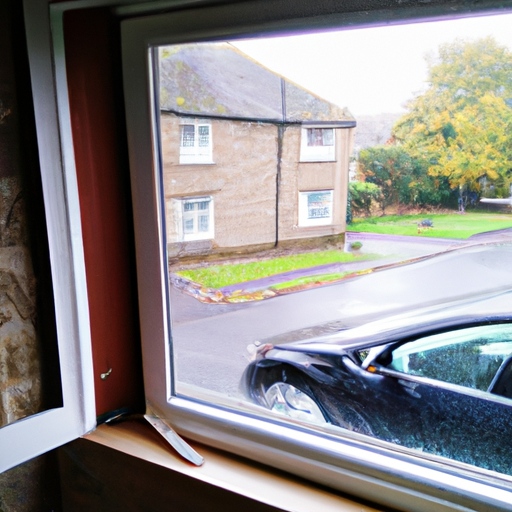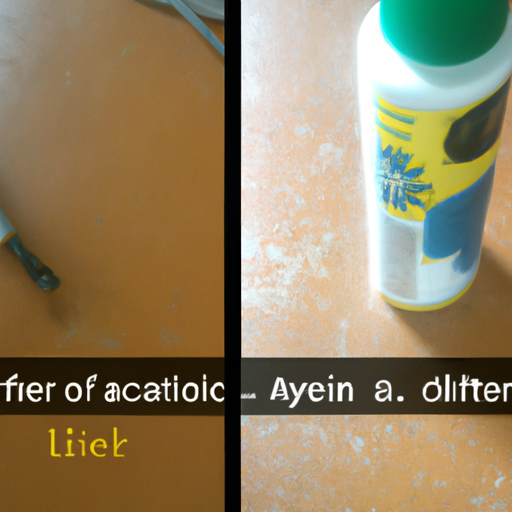
Case Study: Solving a Church Window Access Challenge in Yeovil
Case Study: Solving a Church Window Access Challenge in Yeovil
If you’ve ever looked up at a tall church window and thought, “How on earth would you clean that without turning the place into a scandi-Narnia palace of scaffolding?” you’re not alone. I’ve had those moments more than once, especially here in Yeovil, Somerset, where historic buildings dot the landscape of South West England and the weather keeps us on our toes. This is a real-life case study from a parish church in Yeovil where access was the sticking point. The goal was simple in theory—sparkling glass and safe access—but the path to get there was anything but straightforward.
And that’s precisely what I want to share. Not as a brochure of bravado, but as a neighbourly recounting of how we solved a tricky access problem while keeping compliance with UK health and safety regulations firmly in sight. If you’re in Sherborne, Crewkerne, Ilminster, Martock, or Somerton and you’ve faced similar access headaches, you’ll recognise the same kinds of constraints: historic fabric, limited ground space, and a need to protect both the window panes and the surroundings.
So, here’s how it unfolded, what we chose, and what other Yeovil folks can learn from it. And if you want to explore related reading, there are a few links woven in to help you compare approaches or read similar case studies in our blog.
For broader context on access strategies, you might like to check out Solving Window Cleaning Access Problems in Yeovil, Somerset and our general blog.
The challenge at a Yeovil parish church (and why it mattered)
The church sits in a relatively tight footprint behind the town’s busy Market Place, with a steep roofline and tall stone windows that tell a story of centuries past. Cleaners know that older glass often carries leaded lights and delicate mouldings, so aggressive brushing or high-pressure jets are a big no-no. In this case, the windows faced two main issues:
- Access to the upper panes required more than your usual step ladder and a friendly nod to gravity. Ground-level cleaning wouldn’t reach the two-storey heights without some serious ground handling or a safe working platform.
- The surrounding environment, including a small churchyard edge and limited space for mobile elevated work platforms, made traditional scaffolding impractical and potentially disruptive to parish activities.
All of this mattered for two reasons. First, the church trustees wanted to protect vulnerable historic glass from damage. Second, the diocese emphasised that any cleaning work must be conducted with proper safety measures and documented risk controls. This is where Work at Height Regulations 2005 and the broader Health and Safety Executive (HSE) framework came into play. RAMS (risk assessments and method statements) weren’t optional; they were part of the process to gain permissions and keep everyone safe.
From a local perspective, it’s not unusual to see similar constraints across Somerset. The nearby towns of Sherborne and Ilminster, for instance, have churches with long histories and tight spaces. The lesson here isn’t just about Yeovil; it’s about applying careful planning and local know-how to historic buildings next to busy streets.
The plan: weighing access options (and what we ruled out)
We started with a ground-up assessment. The options typically considered in Yeovil for such access challenges include:
- Pole cleaning from ground level using a water-fed pole system. This is great for a lot of modern windows, but upper tracery and leaded lights sometimes need a gentler touch that a pole alone can’t safely achieve.
- Traditional scaffolding. It’s reliable, but in a setting like a parish church behind a narrow lane, scaffolding can be intrusive and potentially disruptive to the grounds or nearby graves and headstones.
- MEWP (mobile elevating work platform) or cherry picker. Helpful for height, but ground clearance and positioning could be hampered by the churchyard edge and adjacent structures.
- Rope access. This is a well-established approach in the window-cleaning world, especially for heritage and difficult-to-reach features. It requires trained operators, robust RAMS, and a careful plan for anchor points and fall protection.
In this case, given the ground constraints and the desire to protect the stonework, leaded glass, and surrounding environment, rope access offered the best balance of access, safety, and minimal disruption. It’s a method we don’t take lightly, though. Rope access demands teamwork, precise planning, and weather windows that behave. And yes, it’s perfectly compliant when trained teams follow the right procedures and regulators’ guidance.
If you’re curious about the specifics of access strategies, you might also find helpful the article on window cleaning access problems in Yeovil which outlines decision-making in similar constrained spaces.
The on-site work: rope access, safety, and the cleaning approach
We assembled a small, experienced team—two technicians with rope access training and fall-protection apparatus. The plan was to work from two tether points with redundancy so we wouldn’t be tied to a single anchor. The anchor points were chosen for stability, existing structural integrity, and minimal impact on the building fabric.
Key safety steps included:
- A full RAMS package aligned with the Work at Height Regulations 2005 and our internal safety standards. This covered weather windows, wind limits, line protection, and contingency plans.
- Bridle lines and backup systems to ensure a fall-arrest setup for both operators, plus spotters on the ground to monitor anchor points and communication.
- Soft cleaning methods for the glass. We used a pleated brush lightly with biodegradable, non-corrosive cleaning agents to avoid any damage to the historic lead came or the surrounding stonework.
- Minimal contact with the stone masonry. We avoided hooks or equipment that could scratch or dislodge stabilising mortar.
And yes, we leaned on local know-how. In Yeovil, we’ve learned that ground conditions can change quickly with the weather, so planning with a “weather window” mindset is essential. In late autumn, when Somerset wind patterns swing from west to east with gusts off the sea, a quiet day is worth its weight in clean windows. And during the winter, frost and damp can sneak into joints; that slows us down but keeps the process safer and more controlled.
We also kept the parish informed throughout. There’s a balance between doing the work efficiently and respecting a place of worship and its community schedule. If you’re in nearby towns like Sherborne or Ilminster, you’ll recognise the practical reality: you plan for church services, school visits, and market days, then fit in the work around those rhythms.
For context on related safety considerations in Yeovil, you can read about Window Cleaning Health and Safety in Yeovil and see how safety messaging translates into real-world jobs.
Execution: how the plan translated into clean windows
On the day, we proceeded with a staged approach. First, we carried out a surface walkthrough to confirm anchor integrity and check for any loose masonry, loose bricks, or stonework that could be affected by swinging ropes. Then we established communication protocols with the ground team, so the rope team could focus on the upper windows without losing contact with the rest of the site.
Our cleaning technique was gentle but thorough. Leaded lights and old glass can be forgiving if you respect the coatings and textures. We used a soft brush and a low-irritant cleaner, avoiding high-alkaline solutions that can degrade historic glass over time. The aim was a streak-free finish without altering the historic patina of the panes.
Weather played a crucial role. We watched the forecast for moments of relative calm, avoiding cleaning during gusts and wet spells. And this is where seasonal considerations matter in Somerset: a calm, cool morning in late spring or early autumn is often the simplest window to work with, whereas a damp autumn day can complicate rope-based work. If you’re planning something similar, you’ll want flexibility around rain and wind—our best days typically come after a dry spell with a light breeze.
The actual operation took longer than a straightforward ground-clean because of the height and the necessity to pause around any potential risk. But the result bore out the plan: clean panes, preserved historic glass, and a clean, respectful process that didn’t disrupt church activities.
If you’d like to see a similar approach in action, have a look at our case study on a listed manor house restoration for a broader sense of how we balance access, safety, and historic integrity: Listed Manor House Restoration in Yeovil.
Timeline, costs, and practical takeaways for Yeovil clients
We don’t pretend every Yeovil job will mirror this one, but there are consistent lessons you can apply elsewhere. In this case, the work schedule spanned two half-days to accommodate daylight and weather windows. The cost, while specific to the site and scope, generally reflects the extra planning, rope-access crew, and safety documentation required for sensitively cleaning historic glass. If you’re budgeting for a project like this, plan for:
- A site survey and risk assessment phase (essential for permissions and RAMS).
- Access equipment and anchor point verification, including redundancy for safety.
- A cleaning approach that protects leaded glass and historic patina, which can justify slightly higher material costs but saves on potential glass replacement and stonework repair later.
- Contingencies for weather—Somerset’s climate isn’t shy about wind and rain, so you want a few flexible days in the schedule.
From a local economy perspective, a well-managed project like this can also raise property values and preserve historic features—areas where Somerset leads the way in thoughtful heritage maintenance. If you’re considering cleaning for a historic property that could benefit from a gentle, professional touch, you might find value in a targeted Yeovil case study like Window Cleaning for Property Sales in Yeovil. It links practical cleaning with the potential to boost a property’s first impression and value.
And if you’re weighing your options between a professional crew and DIY efforts, you’ll want to read Professional vs DIY Window Cleaning in Yeovil to see what a pro brings to a sensitive project like a church window. The experience here reinforces why working at height with proper training and equipment is a safer, more reliable route for historic glass.
Practical guidance for similar challenges around Somerset
- Start with a risk-aware plan. In Yeovil and the surrounding countryside—Sherborne, Crewkerne, Ilminster—the number of narrow spaces and historic structures means you can’t rely on “one size fits all” scaffolding. A tailored RAMS approach makes all the difference.
- Consider rope access when ground-space is limited. It’s a legitimate, safe option when performed by trained technicians and backed by robust anchor selection and emergency procedures. This isn’t DIY territory; it’s professional work.
- Protect the glass and stonework. Use gentle brushes and non-abrasive cleansers. The aim is to reveal clarity, not remove patina or cause micro-scratches that could worsen over time.
- Schedule with the local climate in mind. Somerset weather can be capricious; plan for windows in late spring or early autumn and keep a short list of alternative dates in case of rain or high winds.
- Keep the parish and stakeholders informed. A successful project is as much about communication as it is about technique. If you’re in a church setting, a clear plan and regular updates help everyone stay aligned.
For readers curious about broader safety context in Yeovil, see our overview on Window Cleaning Health and Safety in Yeovil.
Frequently asked questions (FAQ)
Q1: Do we need special permissions to clean church windows?
- In most cases, yes. Churches often require consent from the church leadership and, if necessary, the diocese or managing body. We always verify permissions and ensure our RAMS align with site requirements.
Q2: How long does a project like this take in Yeovil?
- It varies with height, weather, and ground constraints. A typical two-day window can extend to three if the ground team needs extra time to set up or if weather windows are tight. We always provide a clear schedule before we start.
Q3: Is rope access safe for historic windows?
- Absolutely, when performed by trained technicians with proper fall protection and redundant anchor points. Rope access is standard in many heritage-cleaning projects because it minimizes ground disturbance and preserves surrounding features.
Q4: What about the cost? How should I budget?
- Expect a price range that reflects site access, safety planning, and the complexity of the glass. Ground-level solutions are cheaper; rope-access projects with RAMS and permissions cost more, but they protect the fabric of the building and reduce risk to occupants.
Q5: How can I learn more about similar challenges in nearby areas?
- We’ve published related case studies and guides you can explore through our blog and related posts such as Solving Window Cleaning Access Problems in Yeovil.
Final takeaways for Yeovil homeowners and churches
- When access is restricted, professional rope access offers a viable, safe alternative that minimizes disruption to worship and daily life. It also protects historic glass and stonework from the collateral damage that scaffolding can cause.
- Planning and communication with church authorities are non-negotiable. The more you document in RAMS and keep stakeholders in the loop, the smoother the work progresses.
- This case is a reminder that Yeovil’s climate and historic architecture demand a tailored approach. We’re fortunate to have local experience guiding decisions that can be transferred to nearby areas like Somerton and Martock, where similar considerations apply.
If you’re facing a challenging window-cleaning job, especially on a historic or listed building, we’re happy to help. You can learn more about our services and approach on the homepage—our window cleaning services in Yeovil are designed to be thorough, safe, and respectful of local heritage. And if you want to see more about our general method and ethos, our blog is a great place to start: the blog.
For a broader sense of related Yeovil projects, have a look at Property sales window cleaning guidance and the manor-house restoration case study linked above. If you’re ready for a no-obligation site survey, reach out through our homepage and we’ll tailor a plan that respects both safety and history.
And if you’re curious about how this kind of work sits alongside other local topics, you might enjoy comparing with Professional vs DIY Window Cleaning in Yeovil and exploring more from our blog.
Notes for internal editors and editors in Yeovil: If you’d like to link to more Yeovil-specific landmarks or emblematic local sites in future posts, we can incorporate safe, accurate references to well-known locations such as Market Place and other prominent town centre features. For ongoing seasonal planning, consider adding short sidebars noting typical autumn/winter wind patterns in South West England and how they influence access windows for historic buildings.
Why Choose Professional Window Cleaning in Yeovil, Somerset?
If you're looking for reliable window cleaning services in Yeovil, Somerset, we're here to help. Our experienced team provides professional window cleaning for homes and businesses throughout Somerset.
Ready to get sparkling clean windows? Contact us today for a free quote!
Related Articles
- Solving Window Cleaning Access Problems in Yeovil, Somerset
- Window care for holiday lets in Somerset – Yeovil and beyond
- Equipment Essentials for Yeovil Businesses: Window Cleaning Gear
This article was written by Yeovil Window Cleaning Services, your local window cleaning experts serving Yeovil, Somerset and surrounding areas in Somerset.
Last updated: 10 October 2025
Need Professional Window Cleaning in Yeovil?
Get crystal clear windows with our professional cleaning service. We serve residential and commercial properties throughout Yeovil and surrounding areas.
Get a Free QuoteRelated Articles

More Soap Means Cleaner Windows? Yeovil, Somerset Myth Debunked
A neighbourhood chat with a window cleaner about the old belief that more soap equals cleaner windows. In Yeovil, Somerset, the truth is a bit more nuanced—and safer too.

November Back-to-School Window Care for Yeovil Flats
A neighbourly, practical guide to keeping windows in Yeovil flats sparkling through November. Local tips, safety-minded steps, and a seasonal plan for Somerset weather.

The Best Annual Window Cleaning Tips for Yeovil Homes
Ever wondered how to keep Yeovil windows sparkling year-round without the hassle? This neighbourly guide blends local weather, safety, and practical tips for Somerset homes.
